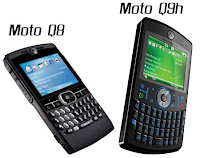Driving in India is a tough task if you are not aware of routes. But this task has been made easier by the new MapmyIndia navigator, which is an in-car global positioning system (GPS) navigation device designed by CE Info Systems based in New Delhi.
The device comes loaded with maps of Indian roads, both state- and national- highways, linking together 55,000 towns and villages, complete with landmarks. It can be placed on the dashboard or windshield of a car, and functions via a satellite system. MapmyIndia navigator has real-time voice support for each and every road turn that instructs the driver about current location as well as locations to be arrived at.
The device offers entire details of streets, localities, landmarks, ATMs, hospitals, and cafeterias, based in 18 major cities, including Delhi NCR, Mumbai, Navi Mumbai, Kolkata, Chennai, Bangalore, Chandigarh, Mohali, Hyderabad, Secunderabad, Thane, and Pune.
Presently, CE Info Systems is outsourcing the MapmyIndia navigator device from Delphi and Amax. It's available in two variants; Delphi NAV 200, and Amax 06GP5A with built-in GPS (SirfStar III) having 3.5-inches color touch-screen backed by Samsung 400 MHz processor. The touch-screen even allows playing music, games, and viewing movies and photos.
Rohan Verma, director of CE Info Systems, said that the market for in-car GPS navigation systems is rising across the world. Last year, 20 million personal navigation devices were sold in the US, and another 30 million in Europe. In India, the product has been introduced only two years ago, and is slowly catching on.
MapmyIndia navigator is priced at Rs 21,000 in Delhi, and Rs 22,000 outside Delhi, and can be purchased through the MapmyIndia.com Web site.
The device comes loaded with maps of Indian roads, both state- and national- highways, linking together 55,000 towns and villages, complete with landmarks. It can be placed on the dashboard or windshield of a car, and functions via a satellite system. MapmyIndia navigator has real-time voice support for each and every road turn that instructs the driver about current location as well as locations to be arrived at.
The device offers entire details of streets, localities, landmarks, ATMs, hospitals, and cafeterias, based in 18 major cities, including Delhi NCR, Mumbai, Navi Mumbai, Kolkata, Chennai, Bangalore, Chandigarh, Mohali, Hyderabad, Secunderabad, Thane, and Pune.
Presently, CE Info Systems is outsourcing the MapmyIndia navigator device from Delphi and Amax. It's available in two variants; Delphi NAV 200, and Amax 06GP5A with built-in GPS (SirfStar III) having 3.5-inches color touch-screen backed by Samsung 400 MHz processor. The touch-screen even allows playing music, games, and viewing movies and photos.
Rohan Verma, director of CE Info Systems, said that the market for in-car GPS navigation systems is rising across the world. Last year, 20 million personal navigation devices were sold in the US, and another 30 million in Europe. In India, the product has been introduced only two years ago, and is slowly catching on.
MapmyIndia navigator is priced at Rs 21,000 in Delhi, and Rs 22,000 outside Delhi, and can be purchased through the MapmyIndia.com Web site.



